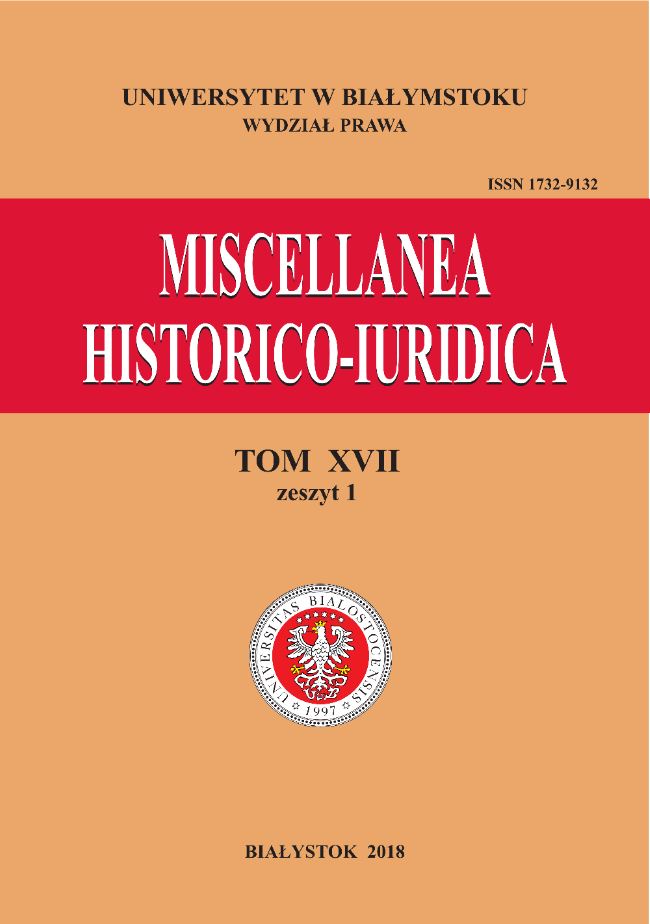Ewolucja polskiego systemu prawa wykroczeń w XX w.
Evolution of the Polish misdemeanour law system in the XX century
Author(s): Marcin ŁyskoSubject(s): Law, Constitution, Jurisprudence, History of Law
Published by: Wydawnictwo Uniwersytetu w Białymstoku
Keywords: misdemeanour law; Poland; adjudicating on petty offences
Summary/Abstract: When the Polish state regained its independence in November 1918, there were three different legal regulation on its territory which represented three types of law for minor offences that were dominant in Europe at that time: French, Austrian and German. The work of creating a uniform system of minor offences law in midwar Poland, included some solutions similar to those of the German model. The codification of criminal administrative procedures of 1928, placed minor offences under the jurisdiction of state administration, however, it provided for court control over it. Codification of the Polish Minor Offences Law, which provided for typically repressive punishments of custody and a fine, was completed and issued in 1932. In 1951, the Communist regime that ruled Poland after World War II, introduced a completely new, compared with European standards, model of Minor Offences Law. Here, minor offences cases were delegated to a collective body with the participation of a social factor. Although the collective bodies’ proceedings were created on the basis of court proceedings, an appeal to the jury of a superior court was introduced as in the Austrian administrative model. Custody was replaced by a socialistic penitentiary work, which existed until 1958. In 1958, collective bodies were given the right to administer custody for more serious offences, which resulted in the restoration of court control over criminal administrative proceedings. The next step, showing a tendency to abandon the Austrian model, was the bill on passing some minor offences to criminal administrative proceedings which was passed in 1966. This bill initiated a division of criminal deeds into crimes and offences based on the monetary value of harm occasioned. A complex codification of the minor offences law, which took place in 1971, continued the process of expanding minor offences law with institutions of criminal law and criminal proceedings. However, in terms of structural composition, Polish minor offences law was typical of an administrative model. The fall of the Communist regime made it possible to introduce wide changes which fully adjusted minor offences jurisdiction to international standards. The reform of 1990 conferred a form of quasi-public courts, operating at criminal courts of the lowest level, on collective bodies. One of the consequences of connecting collective bodies with the system of common courts was the complete submission of minor offences legislation to court control. In 2001, all collective bodies were disbanded and, thereafter, minor offence cases were to be dealt with by criminal courts of the lowest level. The modern model of Polish jurisdiction on minor offences is similar to French solutions, however, material law does not refer to the French concept of treating minor offence as the lowest form of crime. The formal separation of crimes and minor offences, which is not typical of European solutions, stems from the mixed character of the Polish minor offences law wherein, crime refers to concepts originating from German countries, whereas the model of minor offences proceedings refers to French models.
Journal: Miscellanea Historico-Iuridica
- Issue Year: 17/2018
- Issue No: 1
- Page Range: 167-192
- Page Count: 26
- Language: Polish

